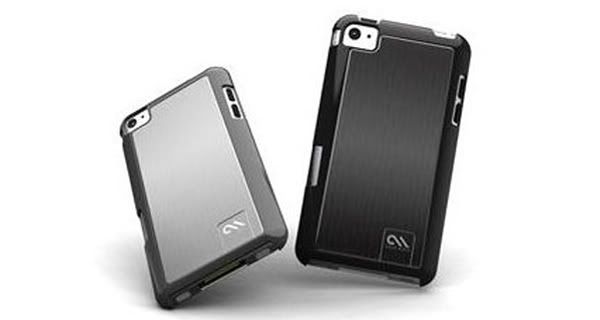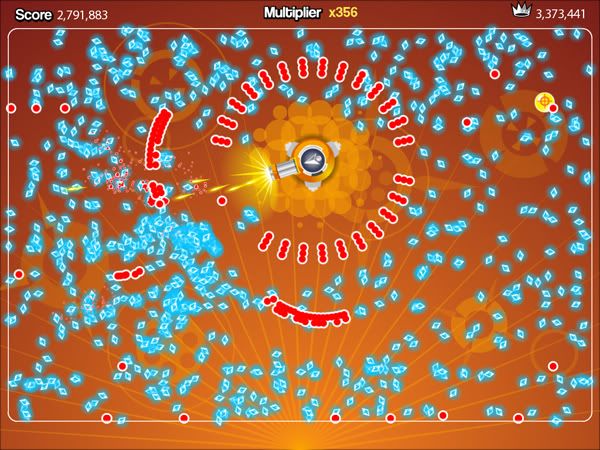This post has not been edited by the GamesBeat staff. Opinions by GamesBeat community writers do not necessarily reflect those of the staff.
It seems a few people are excited about the impending announcement — and, I suppose, also the release — of the iPhone 5. We're at the point where a new "leak" hits every day, some more credible than others. But when iPhone darlings Case-Mate accidently pushed an iPhone 5 accessory page live with renders, I paid attention. Particularly when I noticed something on the side that looked like a shoulder button.

Do you see it? There! Right there, right where I'm pointing! There!
Sure, that could just be the new sim-card slot, but with a (supposed) 6.2mm thickness, I have to wonder if there's enough room. Or any real need. We're talking about a device that can (probably) stream anything from the cloud or download it wirelessly, so why not spend that limited real estate on a control you'll actually use?
Either way, it's a tantalizing idea. A shoulder button would do something the tens of thousands of games in the App Store never did: turn the iPhone into a full-fledged gaming device.
Don't get me wrong, I've got plenty of games on my iPhone, and I enjoy playing them. But it takes a very specific kind of game to work on an iPhone (or, by extension, an iPad), and a lot of developers simply don't get that.
I'll give you an easy example: Grand Theft Auto: Chinatown Wars from Rockstar Games, past masters at shrinking a full GTA game down to a handheld platform. It even had the added benefit of porting over from the Nintendo DS, another touch screen-savvy platform. And it handles far worse than any other GTA game on every other platform, ever. Virtual controls with zero physical feedback turn basic driving into a constant battle of insane over-correction. Need for Speed Shift solved this with tilt-based steering, but then completely automated the acceleration. Really? A game with "speed" right in the title, and I don't get to hit the gas?
Both those games suffer from the same problem. Their developers tried to crowbar a video game with video-game controls onto a platform that doesn't support either.

Die, AT&T Store!
Rockstar had to completely redesign the controls for GTA: Chinatown Wars to work without a physical control pad or a plastic stylus (which wouldn't work on the iPhone's capacitive screen). Instead, your big, fat fingers cover up a portion of the screen, flailing for controls that aren't actually there. Forget finding a button you can't see or feel in the heat of action. That effectively subtracts any hope of precision from the gameplay.
Lest you think I'm just picking on RockStar and Electronic Arts, I've played an independently made, first-person shooter's multiplayer matches on an iPhone. Horrible stuff. Imagine tapping the screen to shoot and screwing around with phantom controls while your shooting hand obscures the entire picture. Fun, eh?
The smarter games don't try to make the iPhone into something it isn't. To date, it's not a dedicated gaming device. That's an incidental market Apple stumbled into like a drunk wandering into a distillery during a company holiday. To be sure, very clever people worked within the iPhone's limits, and exceedingly clever people exploited them. Angry Birds? That's a click-and-drag game, pure and simple. Peggle? Think of it as aggro-pachinko, with slowly planned and executed turns. Tilt to Live? Fast and frenetic, but not exactly a twitch-based shooter.
Those are great titles executed well, all belonging to the very slender niche of smartly designed iPhone games. The problem is a platform should enable a developer to make game-serving choices at will, and the iPhone does the exact opposite. People find workarounds where they can. They adapt turn-based JRPGs that don't require reflexes or timing, and that's fine. But try to find an App Store port of Pac-Man that isn't a thoroughly miserable experience. The iPhone's complete inflexibility narrows the possibilities to a suffocating degree.

When you're surrounded, you can't miss.
How would a shoulder button change that? Well, for starters, it's tactile, easy to instinctively find and use. For another, it's a concession to the entire notion of gaming on the iPhone; a dedicated control with a specific purpose. If frees up the viewable area on the game screen and lets a developer concentrate on solving movement control issues.
And for those clever, inspired iPhone developers, it opens up new avenues to build around.
We'll probably find out in about two weeks that — nope! — that's actually the sim-card slot and all this speculation failed to even occur to the big brains in Cupertino. But if nobody minds terribly, I'm going to spend those two weeks living in fantasy land because I know a dedicated gaming iPhone could bury the Nintendo DS, destroy the Vita, and build an amazing network of cloud-based mobile gamers, all playing with and against each other.
That might've been an interesting place to live. Ah well.
